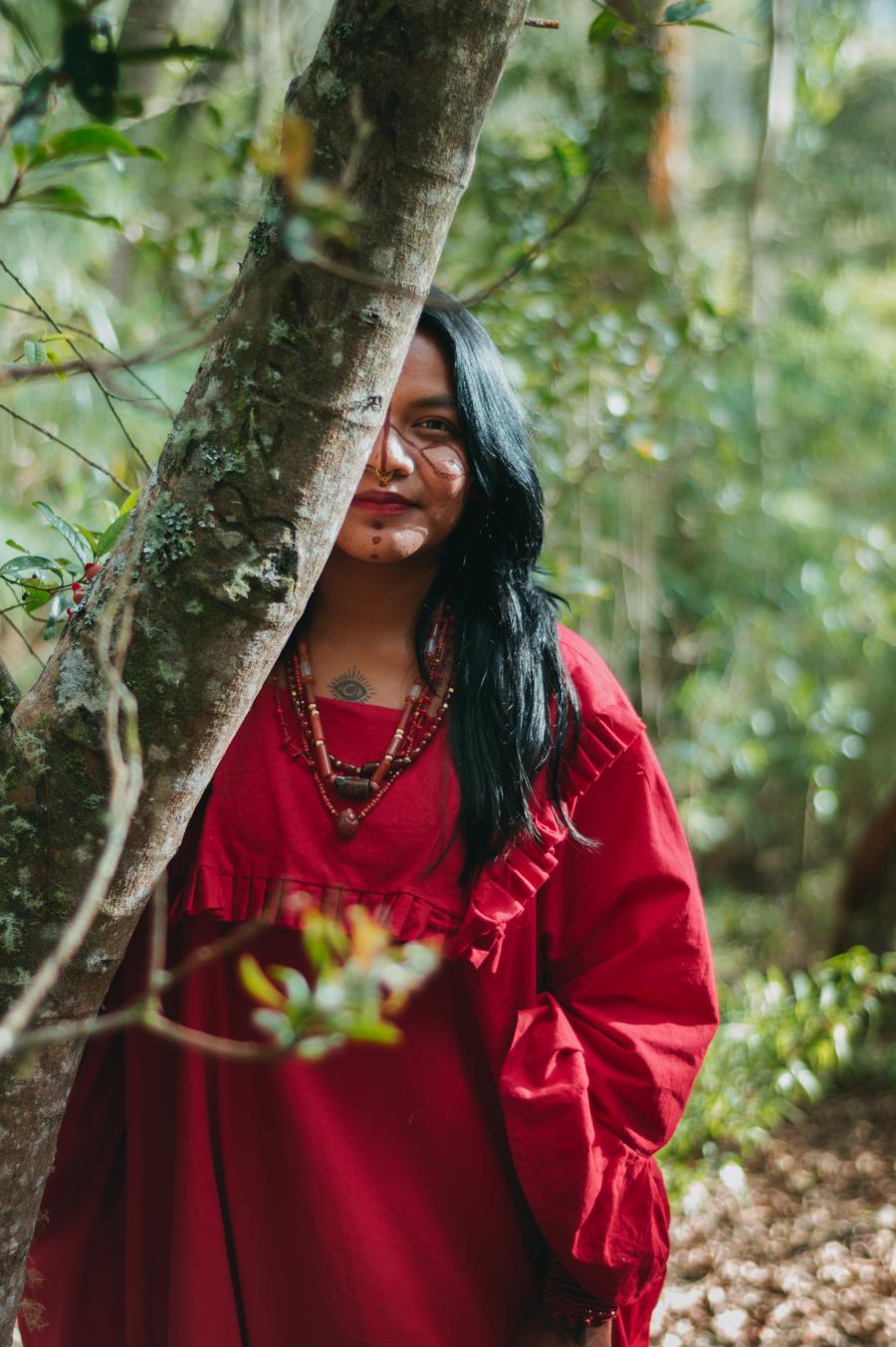Into the Life of the Nation: Use and Self-Determination among Traditional Pumé Hunter-Gatherers in Venezuela
Introduction
People who live by hunting and gathering rely on a substantial land base for food, raw materials, and environmental information. The Pumé of Venezuela are intimately adapted to the savannas they inhabit. Their culture, from religion to social organization, is deeply rooted in their relationship with their environment. The future of traditional peoples depends on assuring them some control over their homelands and rights of land tenure. Integrating Indigenous land ownership with development goals of national governments is a difficult task. Traditional peoples cannot be "managed" analogously to endangered animal species (Pool 1988). They are not "natural conservationists" who can be expected to maintain lands in a state suitable for ecotourism (Alvard 1995). Traditional peoples have their own development goals that must be identified and incorporated into land management policies. The aim of The Pumé Fund is to document Pumé land and resource needs and work with the Venezuelan government to recognize Pumé land ownership.
The Pumé, often known as Yaruro, live in the southwestern Venezuelan savannas, or llanos. About 5,400 Pumé live in the state of Apure along major rivers and in the savanna (OCEI 1995:24). The river groups are relatively sedentary and partly incorporated into the national economy, primarily as peasant labor. Traditional savanna Pumé live in smaller communities of less than 100 people, which vary seasonally in size and location. Pumé subsistence depends on hunting, gathering, fishing, and manioc cultivation. Traditional Pumé are unique for their heavy reliance on wild roots as food. Savanna communities move camp every six months, and make short residential moves from those base camps. Camp moves are necessary because of hyperseasonal variations in rainfall that affect the water table, plants, and animals.
Population and Land Issues
Almost 90 percent of Pumé live in Indigenous communities. 80 percent of Pumé women and 72 percent of men are nonliterate. Of 112 communities in Apure with Indigenous populations (86 percent Pumé), six have a medical dispensary, 24 have schools, and 82 have no services (OCEI 1995:163, 165, 167). The Pumé have inadequate land tenure for the areas they currently occupy. 90 percent of Pumé communities have no legally documented ownership. For 109 communities in the state of Apure, eight have a provisional collective title to their land and three communities have a definitive collective title (OCEI 1995:167, 179-180). For two centuries, Venezuelans have "homesteaded" in Pumé lands. Many are good neighbors, but others have discouraged Pumé use of important resource areas. Although fencing restricts Pumé settlement, they can still hunt those lands and travel across them. With some planning, Pumé subsistence activities can exist in harmony with ranching and other activities of Venezuelan nationals. Recent attempts by the Venezuelan government to es-tablish a national park in Pumé territory have met active resistance from Venezuelan llaneros. Planning has focused on wildlife protection, and provisions for Indigenous land rights are worded to protect only those practices considered traditional. Consultation with Indigenous peoples and Venezuelan nationals has not been actively pursued for this park project.
Health and Nutrition
The reduction of the Pumé land base can aggravate seasonal food scarcity. During wet seasons, game and fish become scarce in the flooded savanna, and the diet is primarily wild roots and bitter manioc. The savanna Pumé experience malnutrition, which exacerbates illnesses and injuries, especially among children. Savanna Pumé adults suffer from tuberculosis, pneumonia, and malaria. A measles epidemic in 1986 caused 46 deaths in 12 Pumé communities (Lizarralde and Seijas 1991:24-26). The Pumé have a repertory of traditional medicines but cannot treat serious illnesses or trauma, and medical attention is rarely available to them. Simple medical supplies, primarily rehydration formula, antibiotics, and clean bandages can dramatically decrease mortality and morbidity.
Cultural Change
The Pumé are currently experiencing a conflict between paid labor and traditional subsistence. Men leave home to perform labor, placing all subsistence responsibilities on women and remaining men. This results in lower overall food returns that are not offset by the few market foods brought home. While savanna Pumé currently perform little wage labor, river Pumé frequently engage in work for Venezuelan nationals. Disruption of traditional subsistence can easily lead to dependence on wage work and market foods that undermines self-determination in coping with cultural changes.
The Pumé Fund
Pei-Lin Yu and Russell Greaves with the help of Cultural Survival developed the Pumé Fund. Its goals are based on data collected during research in 1990-1993 and extensive consultation with one savanna Pumé community. It is apparent that legal ownership of their land is the first priority in helping the Pumé to protect their future interests and safeguard their lifeways. The Pumé Fund will retain a Venezuelan attorney to pursue land tenure rights for the Pumé We also plan to establish a program making medical supplies and visits by Venezuelan health professionals available to the Pumé on a regular basis. These two projects will allow the Pumé more time and security to make informed decisions regarding their own future. The Pumé Fund hopes that this assistance to the Pumé can be integrated with other issues they want to address, toward the development of a political voice in Venezuela. To contribute to The Pumé Fund contact Cultural Survival by phone at (617) 441-5400 or by mail at 96 Mount Auburn Street, Cambridge, MA 02138.
Article copyright Cultural Survival, Inc.

